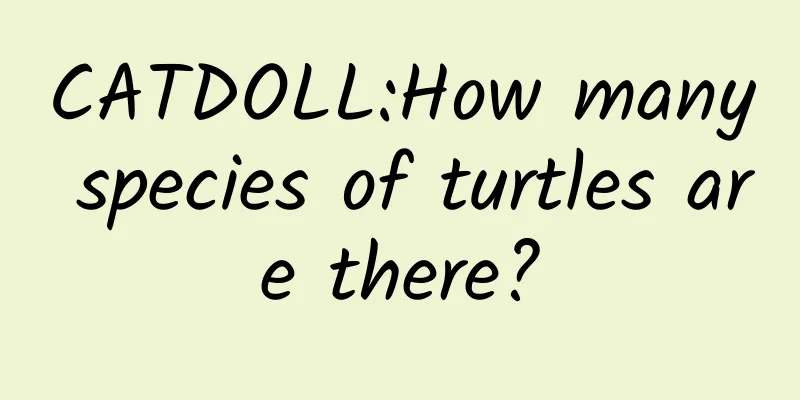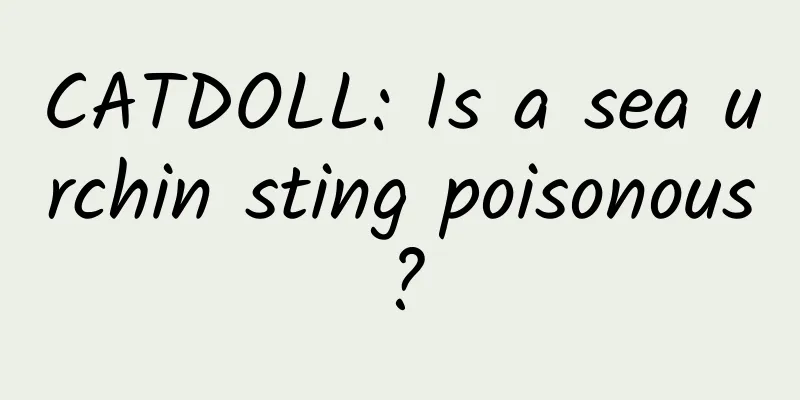CATDOLL : CATDOLL:How many species of turtles are there?

|
There are so many species of turtles in the world that it is impossible to list them all. Here are 18 common turtles, each with its own characteristics. 1. The Chinese grass tortoise, also known as the Chinese grass tortoise, is a genuine native Chinese tortoise. It is easy to raise, hardy and cheap. It is one of the most common turtles in the flower and bird market. When the male grass tortoise grows a few years and reaches sexual maturity, its body will turn black, which is what we often call the black tortoise. 2. The red-eared slider is also a common turtle in the flower and bird market. It is cheap, easy to raise and durable. However, this turtle is an invasive alien turtle. Do not release it at will, otherwise it will cause damage to the local pond. 3. The yellow-margined box turtle is an omnivorous turtle that likes to eat meat, fruits, and vegetables. It also interacts well with humans, making it a turtle that turtle lovers cannot refuse. 4. The red-faced egg turtle is a turtle that looks like an egg. It has an oblong carapace, and its head and limbs can be completely retracted into the carapace. Its face is pink, hence the name red-faced egg turtle. It likes deep water and is quite ferocious, but it is small and very cute. 5. Flame turtles are vegetarian turtles. When they are young, they are similar to red-eared sliders, but they turn red when they grow up. They are very adaptable, eat a lot, and grow fast. 6. Musk turtles are egg-laying turtles. Among egg-laying turtles, they are relatively cheap and small in size, so they can be kept in a small fish tank. They are very cute. 7. There are too many species of map turtles, about a dozen. You need a heating rod to keep a map turtle in winter. It likes deep water and is timid. You need enough patience to keep it well. 8. The yellow-throated turtle is a colorful and cute turtle native to China. Its color changes greatly during its growth, always giving people a surprise. 9. The Golden Turtle is also called the Three-lined Box Turtle. It is a national second-level key protected animal. Therefore, if you want to raise it, you need relevant certificates. The water does not need to be too deep, just enough to cover its back. It looks very good with a golden appearance and a red bottom. It is a very docile turtle and likes clean water. 10. Razorback turtles are aggressive and timid, with a pointy back shell and a unique appearance. They are also a type of egg-laying turtle. 11. Alligator snapping turtle is a very ferocious turtle. Generally, men like to keep this kind of ferocious turtle. It grows fast and has amazing bite force. 12. Painted turtles are small turtles with bright colors and are very beautiful. They are divided into Eastern Painted Turtle, Western Painted Turtle, Southern Painted Turtle and Central Painted Turtle, each with its own unique appearance. 13. The pig-nosed turtle is a deep-water turtle that looks a bit like a soft-shell turtle, but is much prettier than a soft-shell turtle. In recent years, it has also been listed as a protected animal and requires relevant certificates to be kept. 14. The flower turtle is also a genuine Chinese native turtle. It has similar habits to the grass turtle, is easy to raise and hardy, and generally grows faster than the grass turtle. It is not easy to get sick, while the grass turtle is prone to shell rot, but the flower turtle is much better. 15. Donut turtles are super cute when they are young, with round shells and bright colors. They are relatively easy to raise. Donut turtles are large freshwater turtles that can grow very large. Large turtles are not as cute as they were when they were young. 16. The narrow bridge turtle is called the king of turtles. It is very cute, but also very fierce. It likes to eat meat. It is expensive. 17. Sulcata is a land tortoise that is very interactive and good looking. Many people used to keep it. In recent years, it has been listed as a protected animal and requires a license to keep. 18. The yellow-headed side-necked turtle is a tropical turtle that likes to live in deep water. Therefore, a large tropical fish tank often has a yellow-headed turtle. There are several yellow patterns on its head, which is very cute. You need a license to keep it. 1. The species of turtles include: grass turtle, yellow-margined box turtle (broken plate turtle), humpback turtle (grass turtle variant), alligator snapper, red-eared slider, green-haired turtle, tortoise, yellow-throated water turtle, hawk-billed turtle (flat-chested turtle), etc. 2. Several common species of turtles 1. Tortoise (golden turtle, grass turtle) The head is smooth, with small scales at the rear end of the head, and the eardrum is obvious. The posterior end of the cervical horn is wide; there are 5 vertebral horn plates, the first one is wide in front and narrow in the back, and the width of the next three is greater than the length; there are 4 costal horn plates on each side; there are 11 marginal horn plates on each side; there is a pair of anal horn plates, which are nearly rectangular. There are three obvious longitudinal ridges in the center and on both sides of the dorsal spine, which are not obvious in adult males. The secondary horn plates and inguinal horn plates are both relatively obvious. The abdomen is the same length as the carapace. The chin horn plates are triangular; the two outer edges of the humeral horn plates are wider, and the thoracic horn plates and ventral horn plates are larger; the outer edge of the femoral horn plates is slightly wider than the midline; the rear edge of the anal horn plates is concave. There are yellow-margined longitudinal lines with black edges on the sides of the head and throat, and the back is brown (or black); the ventral surface is lighter in color, slightly yellow, and the outer side and lower part of each horn plate are darker in color. The limbs are relatively flat, with claws, fingers, and toes fully webbed. The tail is short and thin. The length, width, and height of the carapace are 120×85×55 mm. Distributed in the Yangtze River Basin, Henan, Shandong, southern Hebei, Shaanxi, Sichuan, Yunnan, Guangdong, and Guangxi. 2. The head of the yellow-throated water turtle is smooth and scaleless, and the eardrum is round. There is a yellow longitudinal stripe on the side of the head from behind the eyes to the membrane. The neck horns are short and wide; there are 5 vertebral horn plates, and the front end of the first one is wide; there are 4 costal horn plates on each side; there are 11 marginal horn plates on each side, and the horn plates in the middle section are narrow and long. The longitudinal ridge in the center of the dorsal spine is very obvious, and the longitudinal ridges on both sides are blunt. The plastron is almost as long as the carapace. The chin horn plates are wider along the midline of the abdomen; the brachial horn plates are wider on both sides; the thoracic horn plates and femoral horn plates are smaller than the ventral horn plates; the posterior edge of the anal horn plates has a deep depression. The limbs have claws, fingers, and toes with full webs. The tail is short and pointed. The back is light brown, usually with dark edges; the ventral surface is yellow. The length, width and height of the carapace are 150×115×60 mm. Distributed in Zhejiang, Anhui, Guangdong, Yunnan, Taiwan, and Hainan. 3. The upper jaw of the ground turtle is hooked, the cervical horn plates are narrow in front and wide in the back; there are 5 vertebral horn plates; 4 costal horn plates on each side, and their width is equal to that of the vertebral horn plates; 11 marginal horn plates on each side, and the marginal horn plates and the groin horn plates are arranged in a serrated shape from the legs. There are three longitudinal ridges on the back. The secondary horn plates and the inguinal horn plates may or may not be present. The plastron is large; the chin horn plates are the shortest; the brachial horn plates are smaller than the thoracic horn plates; the ventral horn plates are the largest; the posterior edge of the anal horn plates is depressed. The scales on the limbs are well developed; there are semi-webs between the fingers and toes. The tail is short, the head is brown, and there is a yellow line from behind the eyes to the neck. The back is light brown with black stripes along the longitudinal ridges; the ventral surface is black with light yellow edges. The length, width and height of the carapace are 125×84×50 mm. It is distributed in Guangdong and Guangxi, and abroad in Japan and Southeast Asia. 4. Three-sided box turtle (red-bellied turtle) The head is smooth and scaleless, the eardrum is obvious and round, the neck horn is narrow and long, there are 5 horn plates, the first one is pentagonal, the fifth one is fan-shaped, and the other three are hexagonal; there are 4 costal horn plates on each side and 11 marginal horn plates on each side; the hip horn plates are longer than wide. There are three longitudinal ridges on the carapace. The carapace is almost the same length as the plastron; the two sides are connected by ligaments. The chin horn plates are triangular; the humeral horn plates and femoral horn plates are narrow along the midline and wide on the outside; the chest horn plates and ventral horn plates are nearly square; the rear edge of the anal horn plate is concave. The plastron has transverse ligaments at the chest and ventral horn plates, so the tortoise shell can be closed here. There are webs between the fingers and toes. The tail is short and pointed. The back of the head is yellow-gray, and there are black stripes on the sides of the head and in front and behind the eyes, forming an oval yellow spot with a black border. The dorsal horn plates are brown, black along the three longitudinal ridges; the ventral side is black, and its edges and marginal horn plates are yellow. The length, width and height of the carapace are 170×128×65 mm. Distributed in Guangdong, Guangxi and Hainan Island. 5. The head of the Chinese flower turtle is relatively small. The cervical horn plates are small and the rear edge is wider; there are 5 vertebral horn plates, and the front edge of the first one is wider than the rear end; there are 4 costal horn plates on each side, and 11 marginal horn plates on each side; the hip horn plates are relatively wide. There are three longitudinal ridges on the carapace, and the ridges on both sides are not very obvious. There are secondary horn plates and inguinal horn plates. The plastron is almost as long as the carapace. The chin horn plates are triangular; the outer edge of the brachial horn plates is wider; the ventral horn plates are larger than the pectoral or femoral horn plates, and the rear edge of the anal horn plates has a deep depression. There are three webbed feet between the fingers and toes, all with claws, and the tail is short and pointed at the end. There are many yellow longitudinal stripes on the back, abdomen, and sides of the head and neck. The back is brown, and sometimes there are yellow spots along the raised edges; the ventral surface is yellow, and each horn plate has black spots. The length, width, and height of the carapace are 220×160×90 mm. It lives in quiet waters and is herbivorous. Its meat is edible. It is distributed in Zhejiang, Fujian, Taiwan, Guangdong, and Hainan Island. It is distributed in Vietnam abroad. Red-eared sliders are relatively common, so I won't introduce them. Turtle refers to the general term for the order Testudinata, and in a narrow sense refers to the species under the family Testudinidae. Turtle is also known as golden turtle, grass turtle, mud turtle and mountain turtle. In animal taxonomy, it belongs to the class Reptilia, order Testudinata, and family Testudinidae. It is one of the common animals in the order Testudinata. Turtle species 1. Flower tortoise 2. Aldabra giant tortoise 3. Golden-headed box turtle 4. Black-necked turtle 5. Indian star tortoise 6. Mississippi red-eared slider 7. Yellow-headed side-necked turtle 8. Yellow-margined box turtle 9. Asian giant tortoise 10. Galapagos tortoise 11. Saw-edged tortoise 12. Boot-footed tortoise 13. Saltwater Mud Painted Turtle 14. Angoloka Tortoise 15. Concave-shelled tortoise 16. Red-footed tortoise 17. Florida donut turtle 18. Radiated tortoise 19. Tooth-margined turtle 20. Three-lined box turtle 21. Alligator snapping turtle 22. Snake-necked turtle 23. Sulcata tortoise 24. Ground tortoise 25. Spiny Tortoise 26. Trembling Musk Turtle 27. European tortoise 28. Japanese stone turtle 29. Hamilton's tortoise 30. Big-headed turtle 31. Burmese tortoise 32. Yellow-headed temple turtle 33. Malayan snail-eating turtle 34. Yunnan box turtle 35. Malaysian giant tortoise 36. Leopard tortoise 37. Yellow-fronted box turtle 38. Eastern reticulated chicken turtle 39. Indian ridgeback turtle 40. Florida red-bellied turtle 41. Yellow-legged tortoise 42. Central painted turtle 43. Annan Turtle 44. Sea Turtle 45. Flat-headed long-necked turtle 46. Malayan box turtle 47. Long-bodied snake-necked turtle 48. Eastern box turtle 49. Mud Turtle 50. Burmese Peacock Turtle 51. Baise Box Turtle 52. Alligator Snapping Turtle 53. Ehrlich's turtle 54. Pteropoda cantorii 55. Cape Berger Tortoise 56. Breast-lifting Turtle 57. Pancake tortoise 58. Burmese star tortoise 59. Local turtle 60. Chinese soft-shell turtle (longevity turtle) 61. Diamondback terrapin 62. Chicken turtle 63. Indian star tortoise 64. Hawksbill turtle 65. Olive Ridley Sea Turtle The species of turtles include: grass turtle, yellow-margined box turtle (Wangna broken turtle), humpback turtle (a variant of grass turtle), giant alligator snapping turtle, red-eared slider, green-haired turtle, tortoise, yellow-throated pond turtle, hawksbill turtle (flat-chested turtle), etc. There is only one kind of turtle, but there are more than 200 other species, including the Brazilian turtle that is rampant in China, the golden head turtle that is unique to Anhui Province in the world, as well as the eagle-billed turtle, the yellow-margin turtle, and so on. |
>>: CATDOLL:Are clams crustaceans?
Recommend
CATDOLL: How to diagnose goose disease?
1. How to diagnose goose illness? 1. Epidemic cha...
CATDOLL: What to do if there are flies in chickens? (What to do if there are flies in chickens?)
1. How to remove flies in the chicken house witho...
CATDOLL: Can newly collected wild bees be merged with a bee colony that has already collected pollen?
1. Can newly collected wild bees be merged with a...
CATDOLL: Things to note when raising small pufferfish at home, how to raise small pufferfish at home
Precautions for raising small pufferfish at home,...
Guide to pig disease prevention and control, scientific identification of pig disease symptoms
How to scientifically identify pig diseases and i...
CATDOLL: The best way to kill flies in pig farms How to deal with flies in pig farms
1. The best way to kill flies in pig farms How to...
CATDOLL: How much can Xiangyun crucian carp grow in a year?
1. How much can Xiangyun crucian carp grow in a y...
CATDOLL: What is lotus seed milk?
What is lotus milk? 01 "Lotus Pod Breasts&qu...
CATDOLL: What food should I feed shrimp?
Lobsters are omnivorous animals. Under natural co...
CATDOLL: How effective are Kant's antibiotics? Analysis of Kant's antibiotics' clinical applications and side effects
Antibiotics from Kangdequan: Protect your health ...
CATDOLL: The fastest way to breed red worms, what conditions are needed to breed red worms
The fastest way to breed red worms, what conditio...
CATDOLL: The most common spider species in rural areas (What are the most common spider species in rural areas)
1. What are the types of spiders for children? Th...
CATDOLL: Causes and treatments of piglet leg joint rot
Causes of piglet leg joint rot Piglet leg joint r...
CATDOLL: What is the main reason for cockroaches in the house? What harm will cockroaches cause to people?
Generally, cockroaches don't breed in houses....
CATDOLL: Are live red worms poisonous? (Are live red worms poisonous? Pictures)
1. Are the blood worms used for fishing harmful t...









